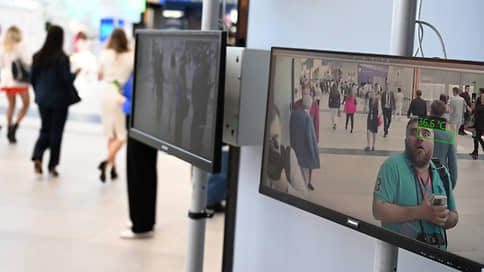The city authorities are ordering mobile biometric systems to monitor emergency situations and mass protests
[ad_1]

The structures of the capital’s mayor’s office are purchasing 150 “mobile biometric systems” to monitor emergency situations and mass protests. We are talking about devices weighing up to 120 kg that recognize the faces of citizens in a video stream, as follows from the competition documentation. Moscow tried to order similar gadgets for searching for criminals in October 2023, but could not find suppliers. This time, city hall structures will be able to find portable systems for the offered price that will cope with the facial recognition function at the entrance to events and in other “bottleneck” places, the expert believes.
A tender for the supply of “specialized mobile biometric systems” for monitoring emergency situations and mass protests was announced by the State Public Institution “Center for Traffic Management” (TsODD, a structure of the capital’s mayor’s office). The supply of 150 devices equipped with an IP video camera (FullHD resolution), a built-in video analytics module, and support for Wi-Fi and LTE is required. The software and hardware complex must, according to the technical specifications, have a function for detecting faces in a video stream and a module for remote connection to the device, be able to store the video stream for seven days, and recognized faces for 30 days. From the tender documentation it follows that the complex should be transportable rather than wearable: the weight of the device is limited to 120 kg, height – 2 m; Moreover, gadgets must have a case made of metal and impact-resistant plastic on wheels. Applications are accepted until February 14, the contract amount is 225 million rubles. The supplier is expected to implement it within a month.
Where exactly the devices are planned to be used is not specified in the documentation. Note that in October 2023, the Data Center already planned to purchase gadgets with similar characteristics and for the same price, but did not find suppliers. An interlocutor of Vedomosti, aware of the details of the tender, explained that mobile systems were required to search for criminals and missing persons on transport. In February 2024, the capital’s Department of Transport reported that since September 2023, thanks to the facial recognition system, it was possible to identify 9 thousand people on the federal wanted list, including 1.5 thousand “dangerous criminals” and 1.3 thousand missing persons missing citizens.
The documentation for the current competition explains that the complexes must be equipped with “the function of loading and maintaining a search database to work offline in places with no communications or in the presence of communication suppression systems,” and also be able to send “cut out faces with metadata and an overview frame.” .
The data processing center already has experience in ordering recognition and video analytics systems. In December 2021, the organization published a procurement tender for 4.2 billion rubles. an intelligent surveillance system that, using neural networks, should detect accidents, traffic jams, garbage, animals on the roads, cars stopped on the Moscow Ring Road, as well as fires and “vehicle incursions into a prohibited area” (see “Kommersant” dated December 24, 2021). At the beginning of 2022, the data center entered into a contract with the Spetsdorproekt company for the installation of 1.4 thousand cameras on the Moscow Ring Road and outbound highways. In October 2023, the capital authorities published a tender for the creation of an automated system for aggregating and processing information on incidents on the roads “PROSobitye”, allocating 285 million rubles for this purpose. The documentation stated that with the help of neural networks, the system would identify emergency situations on the road network, for example, the intrusion of cars and pedestrians into prohibited areas (see “Kommersant” dated October 30, 2023). In the citywide system, which included the platform previously created by Spetsdorproekt, the authorities planned to use data from other city cameras. In October 2023, the data center had more than 3.8 thousand violation detection systems and more than 5.7 thousand different television cameras (including 1.4 thousand cameras installed in 2022).
General Director of Intems (supplies security systems) Alexey Titov believes that the data processing center will still be able to find suppliers of devices. “This could be a portable device running Windows, for which most vendors make recognition systems. And Chinese vendors have recognition systems built directly into cameras,” he says. However, Mr. Titov stipulates that 1.5 million rubles. may cost only the “high-quality camera for facial recognition” itself, so it assumes that Moscow will be able to purchase “small wearable systems.” “Much depends on how the complex will be used,” adds Alexey Titov, who believes that such a device will cope, for example, with the facial recognition function at the entrance to public events in a “narrow bottleneck” mode.
[ad_2]
Source link








